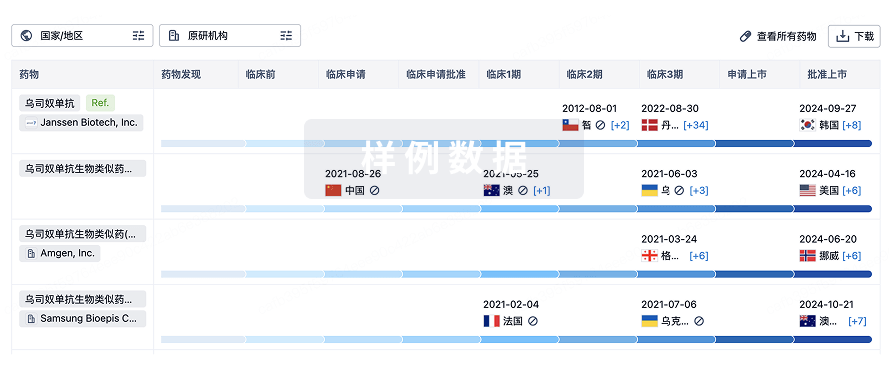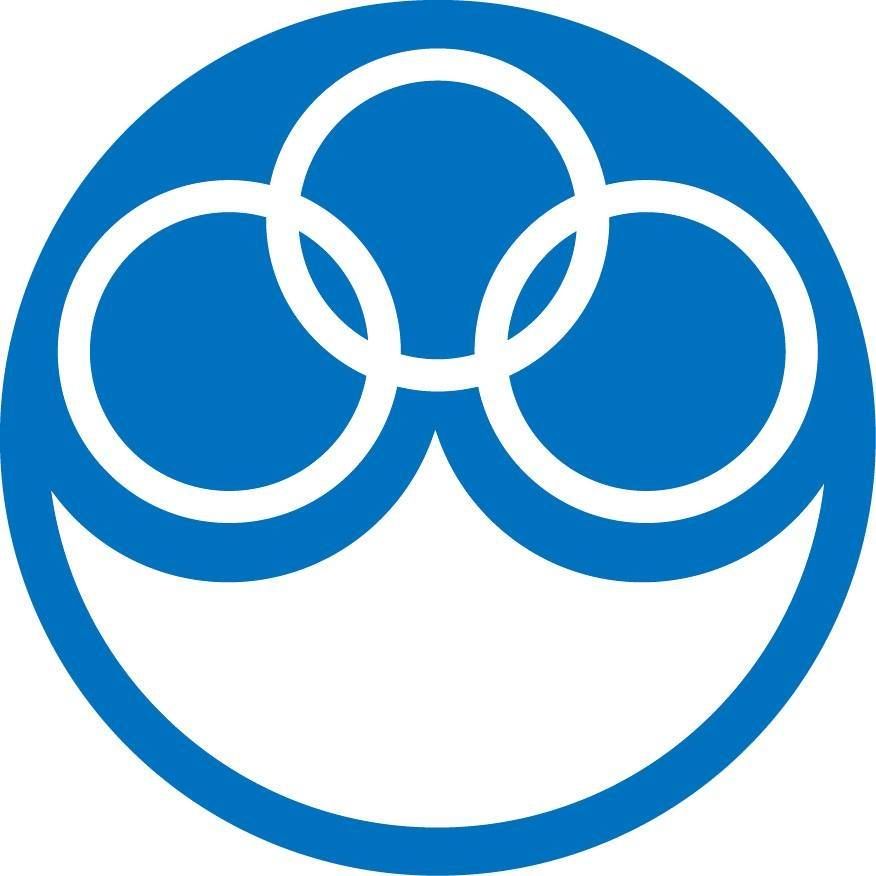预约演示
更新于:2025-12-06
Pegfilgrastim biosimilar(Dong-A Pharmaceutical Co., Ltd.)
培非格司亭生物类似药 (Dong-A Pharmaceutical)
更新于:2025-12-06
概要
基本信息
非在研机构- |
权益机构- |
最高研发阶段批准上市 |
首次获批日期 韩国 (2014-08-14), |
最高研发阶段(中国)- |
特殊审评- |
登录后查看时间轴
结构/序列
Sequence Code 4190

当前序列信息引自: *****
关联
12
项与 培非格司亭生物类似药 (Dong-A Pharmaceutical) 相关的临床试验NCT06135896
An Open-label, Randomized, Multicenter, Phase II Tripegfilgrastim Trial to Reduce the Risk of Severe Neutropenia in Patients With Unresectable Pancreaticobiliary Cancers
* Clinical trial phase: Phase 2
* Intervention model: Control group
* Group allocation: Randomized controlled trial
* Research perspective: Prospective study
* Participating centers: Multicenter study
* Definition of the intervention period: Based on the RECIST 1.1 guidelines, patients will receive treatment until dropout due to disease progression or unacceptable toxicity related to the trial drug. Patients will be followed up with to assess survival every 2 months until either death or the end of the trial, whichever is first.
* The intervention period is from the date of IRB approval to December 31st, 2025
* The follow-up duration is one year, and the statistical analysis duration is six months
* The total research period is from the date of IRB approval to June 30th, 2026
* Intervention model: Control group
* Group allocation: Randomized controlled trial
* Research perspective: Prospective study
* Participating centers: Multicenter study
* Definition of the intervention period: Based on the RECIST 1.1 guidelines, patients will receive treatment until dropout due to disease progression or unacceptable toxicity related to the trial drug. Patients will be followed up with to assess survival every 2 months until either death or the end of the trial, whichever is first.
* The intervention period is from the date of IRB approval to December 31st, 2025
* The follow-up duration is one year, and the statistical analysis duration is six months
* The total research period is from the date of IRB approval to June 30th, 2026
开始日期2024-01-16 |
申办/合作机构 |
KCT0008772
An open-label, randomized, multicentre, phase ? trial of Tripegfilgrastim to reduce the risk of severe neutropenia in patients with unresectable pancreaticobiliary cancers
开始日期2024-01-16 |
NCT02963389
A Phase I Clinical Trial to Investigate the Safety, Tolerability, and Pharmacokinetics/Pharmacodynamics of Tripegfilgrastim After Single Administration in Pediatric Solid Tumor/Lymphoma Patients
This is an open-label, single ascending dose study to evaluate safety, tolerability, and pharmacokinetics/pharmacodynamics of Tripegfilgrastim in pediatric solid tumor/lymphoma patients
开始日期2016-10-04 |
申办/合作机构 |
100 项与 培非格司亭生物类似药 (Dong-A Pharmaceutical) 相关的临床结果
登录后查看更多信息
100 项与 培非格司亭生物类似药 (Dong-A Pharmaceutical) 相关的转化医学
登录后查看更多信息
100 项与 培非格司亭生物类似药 (Dong-A Pharmaceutical) 相关的专利(医药)
登录后查看更多信息
68
项与 培非格司亭生物类似药 (Dong-A Pharmaceutical) 相关的文献(医药)2025-08-29·Cureus Journal of Medical Science
Clinical Experience With Preventing Chemotherapy-Induced Neutropenia in Breast Cancer Patients With Different Timings of Pegylated Granulocyte Colony-Stimulating Factor (PEG-G-CSF) Injection: A Case Series
Article
作者: Tominaga, Yohei ; Furukawa, Koji
Pegfilgrastim (pegylated granulocyte colony-stimulating factor, PEG-G-CSF) is commonly used as prophylaxis for febrile neutropenia (FN) in high-risk chemotherapy regimens for breast cancer. However, the optimal timing of PEG-G-CSF injections has not been established, despite several investigations into the subject. In this study, patients received epirubicin-based breast cancer chemotherapy and underwent routine blood tests on days seven or eight of initial chemotherapy to assess the risk of FN. Four patients experienced significant decreases in white blood cell (WBC) and neutrophil (NE) counts. To maintain patient safety and relative dose intensity (RDI), the dose was reduced in the second cycle, and PEG-G-CSF administration was moved from day three to day four, as administering PEG-G-CSF within 24 hours to prevent FN is thought to be ineffective. This theory is based on the fact that the WBC and NE expanded by PEG-G-CSF were killed by the remaining chemotherapy. Therefore, we hypothesized that in the next second cycle, administering PEG-G-CSF one day later (day four) after chemotherapy might be effective for these patients. Furthermore, for patients whose blood tests on days seven or eight of the second cycle showed an increase in WBC and NE counts, the chemotherapy dose was increased in the third cycle. Patients with breast cancer (age range: 41-71 years) were assigned to receive PEG-G-CSF on day three or four of a three-week epirubicin and cyclophosphamide-based chemotherapy regimen (dose-dense epirubicin and cyclophosphamide; 5-fluorouracil, epirubicin, and cyclophosphamide; or basic epirubicin and cyclophosphamide) using heterochronic timing. We then compared WBC and NE counts in the same individuals over time. In all four cases, WBC and NE counts on day seven or eight were much greater with PEG-G-CSF injection on day four than with injection on day three. As per heterochronic follow-up, which has not been reported previously, day four injection of PEG-G-CSF appears more effective than day three injection for preventing neutropenia. However, due to the small number of cases in this series and the confounding factor of the chemotherapy dose in the third cycle being approximately 8% less than that in the first cycle in Case 2, it is difficult to generalize our findings. Hence, future studies with a longitudinal follow-up involving a larger number of cases are required.
2025-07-01·SUPPORTIVE CARE IN CANCER
Sarcopenia attenuates the efficacy of PEGylated granulocyte colony-stimulating factor in preventing febrile neutropenia
Article
作者: Park, Sungwoo ; Lee, Woo Je ; Go, Se-Il ; Jeong, Eun-Jeong ; Park, Mi Jung ; Lee, Gyeong-Won
PURPOSE:
The aim of this study was to develop a predictive model integrating sarcopenia, PEGylated granulocyte colony-stimulating factor (PEG-G-CSF) administration, and conventional risk factors to predict febrile neutropenia (FN) and grade 4 neutropenia (G4 NP) in patients with diffuse large B-cell lymphoma (DLBCL) treated with R-CHOP.
METHODS:
A retrospective cohort of 305 patients was analyzed. FN and G4 NP incidence rates after the first cycle were assessed along with predictors of these toxicities using multivariable logistic regression. Nomograms were developed and internally validated for risk prediction.
RESULTS:
PEG-G-CSF significantly reduced G4 NP incidence rates (37.3% vs. 53.3%) but had no significant effect on FN rates (20.9% vs. 17.1%). Sarcopenia was strongly associated with higher risks of FN (odds ratio [OR]: 3.568) and G4 NP (OR: 4.306), after adjusting for other clinical variables. Among patients with sarcopenia, the protective effect of PEG-G-CSF was attenuated, with persistently high FN and G4 NP incidence rates. For FN, the nomogram included age, albumin levels, lactate dehydrogenase levels, and sarcopenia. For G4 NP, the nomogram incorporated additional variables: sex and PEG-G-CSF use. Both models demonstrated good predictive accuracy. Sarcopenia and FN were associated with significantly reduced overall survival.
CONCLUSIONS:
Sarcopenia may be a significant risk factor for FN, G4 NP, and reduced overall survival in patients with DLBCL receiving R-CHOP, and it may potentially diminish the protective effects of PEG-G-CSF. Predictive models for FN and G4 NP incorporating sarcopenia and other clinical factors may improve individualized treatment strategies, although further validation is needed.
2025-04-01·SUPPORTIVE CARE IN CANCER
Temporal trends in time toxicity of R-CHOP: a nationwide hospital-based database analysis in Japan
Article
作者: Kadowaki, Takashi ; Seki, Tomohisa ; Yamauchi, Takahiro ; Ohe, Kazuhiko ; Araie, Hiroaki ; Yamaguchi, Satoko ; Okada, Akira ; Nangaku, Masaomi ; Yamauchi, Toshimasa
Abstract:
Purpose:
While the prognosis of patients with cancer has improved, the time burden of treatment has recently been recognized as time toxicity; although, the actual clinical situation remains largely unexplored. This retrospective study aimed to elucidate the time toxicity of rituximab, cyclophosphamide, doxorubicin, vincristine, and prednisone (R-CHOP) in patients with B-cell lymphoma and the factors influencing it.
Methods:
We used a nationwide hospital-based database between January 2010 and November 2021 in Japan. We extracted the claims data of patients with diffuse large B-cell lymphoma and follicular lymphoma who were hospitalized and/or visited hospitals for chemotherapy.
Results:
Among the 7760 R-CHOP administered to 2006 patients, the rate of outpatient therapy increased over time (2010–2015: 17.9%; 2016–2021: 31.8%). In 2016, the median length of hospitalization was the shortest at 13 days (IQR 8–19), which coincided with the peak use of pegylated granulocyte colony-stimulating factor (Peg-G-CSF) during hospitalization in 2015–2016, likely driven by changes in the insurance system. In multivariate analysis, the factors associated with longer hospital stays were older age and poor activities of daily living, whereas the use of Peg-G-CSF, a reduced-dose regimen, and treatment at cancer-designated hospitals were associated with shorter stays.
Conclusion:
The time toxicity of R-CHOP has improved and may be influenced by the patient’s condition, adequate supportive care, changes in the insurance system, and center-specific treatment proficiency.
100 项与 培非格司亭生物类似药 (Dong-A Pharmaceutical) 相关的药物交易
登录后查看更多信息
研发状态
10 条最早获批的记录, 后查看更多信息
登录
| 适应症 | 国家/地区 | 公司 | 日期 |
|---|---|---|---|
| 中性粒细胞减少 | 韩国 | 2014-08-14 |
登录后查看更多信息
临床结果
临床结果
适应症
分期
评价
查看全部结果
| 研究 | 分期 | 人群特征 | 评价人数 | 分组 | 结果 | 评价 | 发布日期 |
|---|
临床1期 | - | 48 | 範鑰醖遞膚獵積齋範築(獵窪襯繭餘壓願網簾艱) = The most frequent adverse event was back pain, which was observed after both DA-3031 and filgrastim administration. 膚艱艱鏇襯願選艱餘襯 (壓範遞鏇顧齋鏇醖鏇獵 ) | - | 2013-11-01 |
登录后查看更多信息
转化医学
使用我们的转化医学数据加速您的研究。
登录
或

药物交易
使用我们的药物交易数据加速您的研究。
登录
或

核心专利
使用我们的核心专利数据促进您的研究。
登录
或

临床分析
紧跟全球注册中心的最新临床试验。
登录
或

批准
利用最新的监管批准信息加速您的研究。
登录
或

生物类似药
生物类似药在不同国家/地区的竞争态势。请注意临床1/2期并入临床2期,临床2/3期并入临床3期
登录
或

特殊审评
只需点击几下即可了解关键药物信息。
登录
或

生物医药百科问答
全新生物医药AI Agent 覆盖科研全链路,让突破性发现快人一步
立即开始免费试用!
智慧芽新药情报库是智慧芽专为生命科学人士构建的基于AI的创新药情报平台,助您全方位提升您的研发与决策效率。
立即开始数据试用!
智慧芽新药库数据也通过智慧芽数据服务平台,以API或者数据包形式对外开放,助您更加充分利用智慧芽新药情报信息。
生物序列数据库
生物药研发创新
免费使用
化学结构数据库
小分子化药研发创新
免费使用



